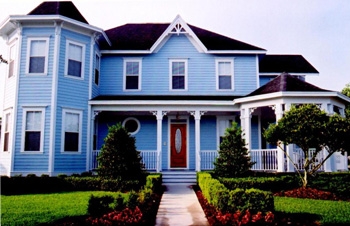
Articles
Codes & Standards
AAMA updates cellulosic composite profile standards
January 31, 2014 By Carey Fredericks

Jan. 31, 2014 – The American Architectural Manufacturers Association (AAMA) has published two updated standards for rigid thermoplastic cellulosic composite profiles. AAMA 309 provides a means for classifying them, and AAMA 311 establishes minimum performance criteria.
AAMA 309-13, Standard Specification for Classification of Rigid Thermoplastic/Cellulosic Composite Materials, spells out the nine-digit classification system that defines various ranges of properties: resin type, percent cellulose content, specific gravity, impact resistance, flexural modulus, flexural strength, thermal expansion, temperature at which deflection can occur and percent weight change due to water absorption. The resulting class designation number is easily decoded using a table provided in the standard.
This 2013 revision adds criteria for measuring heat build-up in pigmented profiles and a requirement for durability when subjected to fabrication and installation processes.
AAMA 311-13, Voluntary Specification for Rigid Thermoplastic Cellulosic Composite Fenestration Exterior Profiles, establishes the minimum requirements for dimensional stability, screw withdraw, thermal cycling, weatherability, heat resistance, heat build-up and lead content of profiles classified in accordance with the properties described in AAMA 309 as used in windows, doors and skylights. It provides the basis for certification of composite profiles under the protocols of AAMA 109, which is required for certification of completed products under AAMA/WDMA/CSA 101/I.S.2/A440, North American Fenestration Standard/Specification for windows, doors, and skylights (NAFS).
AAMA 311-13 additionally specifies in-process manufacturing plant quality control requirements, defining sampling rates and ASTM testing protocols.
“Due to the increased popularity and use of thermoplastic cellulosic composites, resulting in a rapidly growing market share of fenestration products, architects and specifiers are finding these standards useful for verifying product performance, as well as in comparing their properties and performance to those of other polymeric profiles,” says Jack Reed, senior technical service engineer for Arkema, Inc. and chair of the AAMA task group assigned to keep these and other composite standards up to date. “They form the foundation of a quality assurance system for buyers, specifiers and fabricators of these products, as well as a reference point for national code organizations and local code officials.”
AAMA-309-13 and AAMA 311-13, along with other polymeric profile standards, is available in AAMA’s Online Publication Store.
For more information
http://www.aamanet.org
Print this page
Leave a Reply